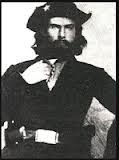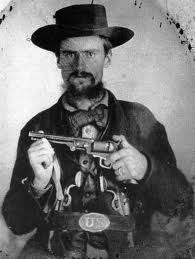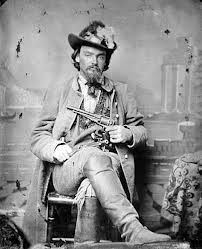 Missouri War Crimes, during the Civil War, were a common occurrence, but one in particular, would be remembered as the Centralia Massacre. The words war crime, atrocity, murder are often mixed interchangeably, in regard to soldiers heinous actions during the heat of battle. In some instances Hate Crime might be a more applicable term to explain the incomprehensible acts. Whatever drives combatants to commit the gruesome and horrendous deeds is hard to judge. Many veterans, of different wars, offer a similar explanation,
Missouri War Crimes, during the Civil War, were a common occurrence, but one in particular, would be remembered as the Centralia Massacre. The words war crime, atrocity, murder are often mixed interchangeably, in regard to soldiers heinous actions during the heat of battle. In some instances Hate Crime might be a more applicable term to explain the incomprehensible acts. Whatever drives combatants to commit the gruesome and horrendous deeds is hard to judge. Many veterans, of different wars, offer a similar explanation,
“If you think you know, how you would react and what your actions would be and what you would do to survive, you probably have never been there and have no frame of reference.”
The Civil War in Missouri and Kansas was rarely fought between regular armies in the field. It was carried out primarily by partisan bands of guerilla fighters, and the atrocities were nearly unmatched. In 1863, Confederate marauders sacked Lawrence, Kansas, and killed 250 residents.
 In 1864, partisan activity increased in anticipation of Confederate General Sterling Price’s invasion of the state. On the evening of September 26, a band of 200 Confederate marauders gathered near the town of Centralia, Missouri. The next morning, William Anderson led 30 guerillas into Centralia and began looting the tiny community and terrorizing the residents.
In 1864, partisan activity increased in anticipation of Confederate General Sterling Price’s invasion of the state. On the evening of September 26, a band of 200 Confederate marauders gathered near the town of Centralia, Missouri. The next morning, William Anderson led 30 guerillas into Centralia and began looting the tiny community and terrorizing the residents.
A train from St. Louis was just pulling into the station. Anderson and his men commandeered the train and took 150 prisoners, including 23 Union soldiers, who were on leave. They then set the train on fire and opened its throttle, sending the flaming train out-of-town. The soldiers were stripped and Anderson’s men began firing on them, killing all but one within a few minutes. The surviving Yankee soldier was spared in exchange for a member of Anderson’s company who had recently been captured.
That afternoon, a Union detachment commanded by a Major Johnston arrived in Centralia to find that the raiders had already left town. Johnston then headed in the direction of “Bloody Bill’s” riders. Johnston’s troopers followed the Rebels into a field, where they were attacked on all sides. The Federals fired one volley and were then overrun by the sharpshooting, revolver armed, guerilla horsemen. Most were shot down as they attempted to flee, of the 155 Union soldiers, 123 were killed during the battle.
Authors and Historians share their impressions of Centralia, Missouri and the carnage,
Tom Goodrich:
 “The aftermath of Centralia would have been truly horrific. In the middle of the day, an autumn day, roughly a hundred dead Federals lay on the ground. They have had their throats slashed and some of them are still being tortured. Many of the guerrillas are drunk. All the emotions are coming out of the guerrillas at this point. This is the chickens of John Brown coming home to roost, so to speak. This is one of the ultimate atrocities of the Civil War. There are 100 men, helpless, disarmed, murdered in their tracks. And it would
“The aftermath of Centralia would have been truly horrific. In the middle of the day, an autumn day, roughly a hundred dead Federals lay on the ground. They have had their throats slashed and some of them are still being tortured. Many of the guerrillas are drunk. All the emotions are coming out of the guerrillas at this point. This is the chickens of John Brown coming home to roost, so to speak. This is one of the ultimate atrocities of the Civil War. There are 100 men, helpless, disarmed, murdered in their tracks. And it would
have been a very terrible thing to see. Beheadings, disembowelment, torture,
fiendish torture, men begging for the lives. This is where the emotions finally
come and bear fruit in Missouri. This is the place where every man who has felt
the oppression of Federal soldiers for the last three years, can finally have
his vengeance.”
T.J. Styles:
“The Union soldiers who came on the scene later described a scene where men were mutilated in the most horrific fashion. In fact, in one case, a man’s privates were described as being cut off and being shoved in the man’s mouth. And there were scalps taken. There were other acts of mutilation. It was an incredibly brutal day.”
Phil Stewart:
“Dying became insignificant. It didn’t mean anything. People were dying daily. Guys were getting arms blown off. You ride into battle and the guy next to you would be virtually decapitated by either musket balls or cannon balls. Bloody Bill Anderson was tying
human scalps to his bridle. Guys were hung. Guys were decapitated. Some of those guys
would cut off ears of the guys that they had killed and would make necklaces out of them. Wearing human body parts around their neck, life just becomes less significant.”
One month later, “Bloody Bill” Anderson was killed attempting a similar attack near Albany, Missouri. Many of Anderson’s men were definitely murderous psychopaths, others were just a product of the circumstances and the era. All lived on the fringe of a border war that had few, if any boundaries.
Historians speak of many atrocities committed during the Civil War, white on black, black on white, maybe even black on black, who knows. War in itself is an atrocity, it is murder, carnage, a hate crime. This Missouri War Crime or the Centralia Massacre is just another example of men(warped by war) trying to cope and survive a life and death struggle, that cannot be dissected, analysed or much less judged, by those that have not experienced the nightmare.
Bummer

